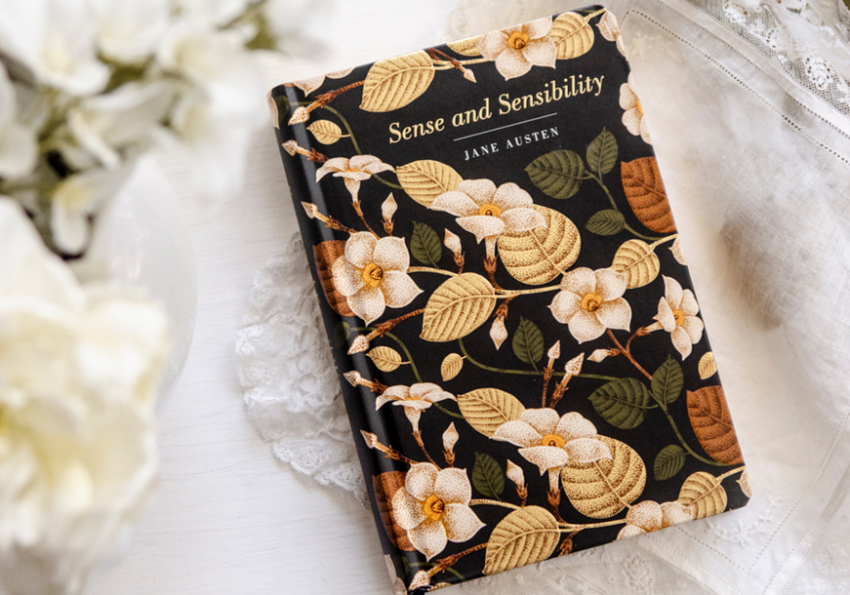Not all characters have to develop.
This can be a little surprising, especially in a time when character development is so emphasized in the literary realm.
Please don’t get me wrong. Most of your characters should develop. The majority of them should not be static. I have an article coming about just how awesome writing a drastic character arc can be.
But not every character is meant to fill that role.
So how can we write those characters and do them well? What is the secret ingredient to making these characters interesting? How can we generate curiosity and intrigue around our characters if they aren’t developing? Can they have a theme or an arc if they don’t develop at all? Why even include them to begin with?
Today we’re going to look at Sense and Sensibility to explore how to write characters that don’t change much and yet still captivate their audiences.
Sense and Sensibility
Sense and Sensibility is about a few things, but one of the biggest theme has to do with authenticity and self-control. Jane Austen explores the role and importance of these virtues through Elinor and Marianne Dashwood, a pair of sisters who are the protagonists of the story.
Marianne values authenticity very highly. At the age of seventeen, she’s already a confirmed spinster because she can’t imagine falling in love with someone she didn’t wholeheartedly agree with on every subject. Even the slightest disagreement would cause enough friction to fracture her picture of the perfect home, and so she is determined not to let herself fall in love. In the meantime, she cultivates relationships by being perfectly honest with the people around her about her thoughts, feelings, and hopes. She sees hiding these as equal to deception, and fears that her friendships will become superficial and put on without the authenticity she strives for.
Elinor, on the other hand, is far more reserved. She is described from the very beginning as being self-controlled and intentional with every word and action. She rarely ever shares her feelings, and although she is not afraid to share her thoughts, she is far more sparing with them than her sister. She sees some of her younger sister’s immaturity, and yet keeps much advice to herself, recognizing that she will have to learn many lessons on her own.
In some ways, the girls’ stories mirror each other. Throughout the novel, both fall in love only to find their love interest engaged to another woman. But while Marianne decries the injustice of it all and spends months alone mourning her loss, Elinor is forced to keep her misfortune a secret, bound by a promise to the deceptive woman who tricked her lover into promising to marry her years before.
Elinor’s word is too strong, her honor too valuable, to break it just because it is bound by an awful person. So she keeps the secret, hiding every tear and worry even from her family. She can’t have her family see her true emotions, or the secret would be revealed and her promise broken, shaming both her lover and his fiancee.
Eventually, Marianne learns the truth and sees the strain Elinor has been put through in secret for the first time. She finds herself condemned, realizing she would never be able to hide a secret as emotional as this one, and ashamed that what she once would have considered deception took such virtue to maintain. Her sister forced herself to hide a truth even more horrible than the one Marianne went through, concealing her emotions even from those closest to her — all for the sake of protecting her honor, her lover’s secret, and preventing her family’s heartache. Marianne realizes that while authenticity is important, she must be capable of hiding her thoughts and feelings when they could harm others. Elinor’s picture of self-control is too strong for Marianne to ignore, and sparks the change that makes Marianne a completely different person by the end of the novel.
Elinor, on the other hand, remains essentially the same.
Elinor Dashwood
Elinor was introduced as being self-controlled and reserved, and throughout the book that doesn’t change. She’s the very same Elinor we met on the first page. If anything, she seems to have become a more extreme version of who she started out to be.
So what makes her such an engaging character?
Although Elinor didn’t change, that doesn’t mean the author allowed her to remain comfortable. Instead, Austen introduces Elinor as being self-controlled, and then sets out to stretch Elinor’s limits over and over again. With each successive development, Elinor’s self-control is tested.
Rather than just being static, she was put to the test. She was brought to her limit. Rather than just telling us that Elinor is self-controlled, Austen spent the entire book proving it. She allowed Elinor to hold a certain set of values and prize certain virtues, and then tested her over and over again. Does she hold to those values when it becomes difficult? How does she react when the most challenging event in her life comes her way? Does she abandon the values she once held most dear when they seem too painful to bear?
By the end of the book, the answer is a clear, resounding, No.
And it all worked to highlight Austen’s theme.
Without Elinor’s example of self-control, Marianne would never have developed or seen a need for herself to change. It was Elinor’s constancy that actually sparked the character arc meant to demonstrate the themes of the book.
Austen could have written Elinor like Marianne, starting the story with little self-control and ending it with more than almost anyone else in the entire novel, but it would have lessened the impact of the story. The readers didn’t need two examples of the same exact arc. Instead, the contrast of the two characters through the resolution of both Elinor’s external conflict and Marianne’s internal flaws created a much more satisfying, powerful story.
Most protagonists should not be static. The vast majority of your characters should change. But pay attention to when having a stagnant character could serve your story.
And when you write them, don’t let them stay comfortable. If they think they are selfless, make them prove it. If they see themselves as humble, test them. If they value courage above all else, see if they will stand by it when it is most challenging. Bring them to their furthest limit and test them in almost unimaginable ways, and let their values emerge true and as strong (if not stronger) than when the story began.
The arc for these kinds of characters should follow a progression. Introduce your character as being defined by the trait your theme centers on, and then include exceedingly harder and harder tests for the trait your theme centers on. Write these characters like a giant arrow pointing toward the value you want to highlight, growing bigger and more attention-catching with each further test until they demonstrate the epitome of that value.
By the end of the story, Elinor has proven herself to be one of the most self-controlled heroines in literature. She was tested again and again to see if her values would hold true, and they did. These tests made her storyline dynamic and interesting, even without any development.
Let me be clear that this isn’t a get-out-of-jail-free card for writing development and character arcs. In some ways, these characters are harder to get right because if their tests become predictable or dull, the character will fail to capture your readers’ interest. Without the pressing question “Will she hold to her values?” hanging over your protagonist, her journey becomes uninteresting. She turns into a Mary Sue who can conquer any challenge or at least only fails when it’s convenient.
And these characters should have character arcs. Elinor felt high points and dark moments, had an epiphany and nearly broke under the strain of her situation. She touched nearly all of the beats of the traditional character arc. It just didn’t change her as radically as it did her sister.
And because of that, Elinor was able to show off Austen’s incredible themes.
These kinds of characters are sadly underutilized in today’s literature. Characters that don’t change are either written unintentionally — as Mary Sues or simply flat characters who serve the plot — or they don’t exist to begin with. And because of that, many authors are missing out on the opportunities they present to enhance stories.
So don’t miss out on this opportunity. Don’t fall into the trap of believing all static characters are boring. Don’t be afraid to write a character with a flat arc. Instead, let their strength shine through from the very beginning, and let it grow throughout the novel until by the end it is unmistakable.



Let us know in the comments:
Have you noticed flat character arcs in other forms of storytelling? Have you ever tried writing one? How did it go?


Hi! My name is Mara, and I’m a Christian artist, violinist, and blogger. I remember the day that I decided that I would learn something new about what makes a good story from every book I picked up — whether it was good, bad, or a mixture of both. I use this blog as a way of sharing some of the tips and tricks I’ve learned, and highlight which books, cartoons, and movies have taught me the most about writing an awesome story.

